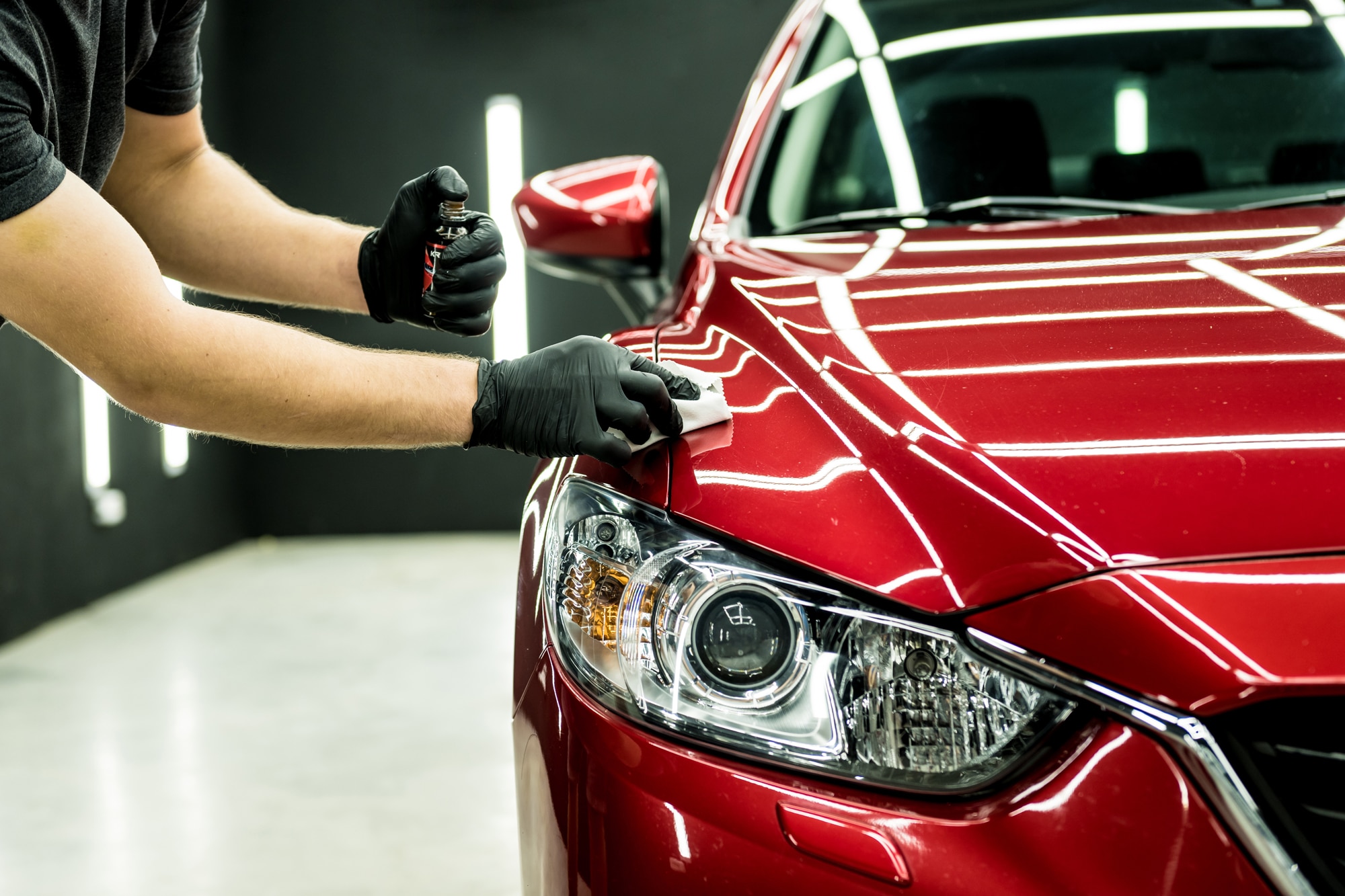Specialist Strategies Used in Ceramic Coating Philadelphia for a Perfect End up
Specialist Strategies Used in Ceramic Coating Philadelphia for a Perfect End up
Blog Article
Why Ceramic Finishing Is the Ultimate Solution for a Flawless Complete
Ceramic covering has arised as a leading service for those looking for a remarkable surface for their automobiles, thanks to its amazing sturdiness and protective features. What variables really established ceramic coating apart?
What Is Ceramic Layer?

When used correctly, ceramic finish produces a hydrophobic surface area that wards off water and dirt, making it much easier to clean up and keep. Unlike standard waxes or sealants, which typically supply temporary protection, ceramic finishings can last for a number of years, depending on the item quality and application technique. The process of applying ceramic layer requires precise prep work, including thorough cleaning and sometimes paint modification, to ensure optimal bonding and effectiveness.
Ceramic coverings are not restricted to automotive surfaces; they can also be used on different materials, including glass, steel, and plastics, giving a flexible option for enhancing defense. Overall, ceramic covering represents a considerable innovation in surface protection innovation, incorporating both visual and functional advantages for a variety of applications.
Advantages of Ceramic Coating
While lots of surface defense options exist, the advantages of ceramic covering stand out as a result of its unique residential or commercial properties and lasting efficiency. One of the primary benefits is its outstanding durability. Ceramic Coating Philadelphia. Unlike traditional wax or sealers that need frequent reapplication, ceramic finishes give a resistant layer that can last for a number of years, substantially lowering upkeep initiatives
Another noteworthy benefit is boosted security against environmental pollutants. Ceramic finishings develop a hydrophobic surface area that drives away water, dirt, and numerous contaminants, making it simpler to cleanse. This function not only protects the car's appearance yet likewise minimizes the threat of deterioration and oxidation, particularly in harsh weather condition conditions.
Furthermore, ceramic finishes offer superior resistance to UV rays, stopping fading and degradation of paint gradually. This UV protection is crucial for keeping the aesthetic value of lorries and surfaces revealed to route sunlight.
In addition, the glossy coating attained with ceramic finish boosts the total aesthetic allure, offering surfaces a showroom-quality sparkle. Generally, ceramic coatings stand for a significant innovation in surface protection innovation, giving long-lasting benefits that accommodate both visual and practical requirements.
Just How It Works
Comprehending the science behind ceramic layers reveals exactly how they provide such remarkable security and durability. At its core, a ceramic coating is a liquid polymer that chemically bonds with the car's manufacturing facility paint. This bonding develops a safety layer that is both hydrophobic and oleophobic, repelling water, dust, and oil. The key part of most ceramic layers is silicon dioxide (SiO2), which is originated from quartz. This substance adds to the layer's hardness and resistance to scratches, UV rays, and environmental contaminants.
The application process involves multiple actions, consisting of surface area preparation, which is important to accomplishing optimal attachment. As soon as applied, the layer goes through a treating process, throughout which it solidifies and develops a semi-permanent Discover More bond with the paint surface. This bond is what identifies ceramic finishings from conventional waxes and sealants, offering a longer-lasting safety barrier that can endure for years.
Moreover, the density of the finish can boost its safety qualities, ensuring that it can stand up to harsh problems. Eventually, the science of ceramic finishings combines innovative materials with cutting-edge application strategies to supply an exceptional level of security and aesthetic enhancement for lorries.
Contrast With Typical Approaches
The advantages of ceramic finishings become especially evident when contrasted to standard paint defense techniques such as waxes and sealants. While waxes supply a momentary shine, normally lasting a few weeks to a couple of months, ceramic coverings provide a durable protective layer that can withstand for several years. This longevity considerably lowers the regularity of reapplication, making ceramic layers a more economical option with time.
In addition, traditional techniques usually call for here comprehensive prep work and numerous applications to accomplish a satisfying degree of defense. On the other hand, ceramic layers bond at a molecular level with the automobile's surface, creating a robust shield against environmental contaminants like UV rays, acid rainfall, and road salts. This bond improves the lorry's resistance to scratches and swirl marks, which are common with traditional waxes and sealants.
In addition, the hydrophobic residential properties of ceramic layers push back water and dust, leading to easier cleaning and upkeep. On the other hand, wax and sealant-treated surfaces can attract crud, demanding even more constant washing - Ceramic Coating Philadelphia. In general, ceramic finishes not only offer remarkable security but likewise deliver a more long-lasting and aesthetically enticing coating, developing them as the preferred option for discerning car owners
Application and Maintenance Tips

Utilizing a foam applicator, apply the coating in little areas, complying with the producer's standards regarding thickness and overlap. Enable enough curing time between layers, normally 24 hours, to make certain correct bonding. After application, it is crucial to avoid direct exposure to water or severe components for at the very least a week to enable go right here the covering to completely heal.
In addition, using a ceramic maintenance spray can improve the layer's hydrophobic buildings and longevity. Routine inspections for any indications of wear will help maintain the covering's stability and preserve that pristine finish.
Final Thought
In conclusion, ceramic coating emerges as a premium alternative for accomplishing a remarkable automobile coating. By forming a robust bond with factory paint, ceramic finish efficiently guards against scratches, UV rays, and ecological pollutants.

Report this page